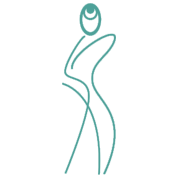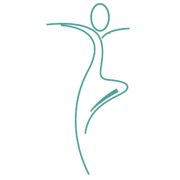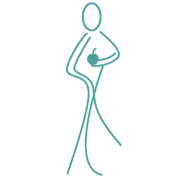What is it? How does it Work?
Osteopathy is a drug-free non-invasive manual medicine that focuses on total body health. It treats complaints by seeking to improve and strengthen the musculoskeletal framework, which comprises all the joints, muscles and ligaments of the whole body. The ultimate goal of osteopaths is to positively affect the body’s nervous, vascular and lymphatic systems.
It is a unique, holistic approach to health care where osteopaths do not simply concentrate on treating the problem area. They use manual techniques to balance all the systems of the body, to promote overall good health and wellbeing. Osteopaths use a wide range of techniques such as stretches, massage, deep pressure inhibition and manipulation of joints.
The philosophy of osteopathy is what sets it apart from other medical disciplines. The key principles are based on all parts of the body functioning together in a harmonious and integrated manner so that no single area is unduly stressed. If a part of the body becomes dysfunctional such as a muscle being too tight or a joint not moving freely then the rest of the body has to adapt for it and compensate. These compensations create stress which will eventually lead to inflammation, pain, stiffness and potentially other health conditions. Osteopathic treatment serves to free the body of restrictions, minimize pain, reduce stress and improve mobility, this then provides the body with the best opportunity to heal itself
Who can it help?
Adults; typically present to the clinic with lower back pain, neck pain or a sporting injury. Lower back pain in an office worker can often be put down to the long hours sat behind a desk without moving and having a poor ergonomic set up. This can be aided by reducing the length of time one sits still at the computer by getting up every 20-30 minutes for a cup of water, a stretch, or a brief stroll around the desk. Even just remembering to correct a slumped (comfortable) posture every now and again is better than nothing. Neck pain is also often linked to posture at work, for example the keyboard situated at arms length, the screen, or screens, at the wrong height or working at a laptop all day long. Having the monitors at the right height (top of the screen level with the eyebrows) and having the keyboard and mouse directly in front of you with the elbows bent at 90 degrees is the ideal ergonomic position that reduces unnecessary postural strain.
For those of us that stay at home and have small children the best way to look after the back is to alternate carrying arms, and to remember to bend the knees when picking a child up, easier said than done when a child is crying. Hold the child close and stand up using the legs rather than the lower back. A simple exercise of tightening the abdominal muscles by trying to draw in the tummy button towards the spine creates a muscular corset that helps to take the load off the lower back especially helpful when going to stand up or sit down.
To avoid injury as much as possible, sport enthusiasts should follow some simple rules; warm-up properly before undertaking higher intensity forms of exercise, set aside at least 5 minutes for post-exercise stretching, and stay well hydrated. In Singapore especially, it is easy to confuse being hot, bothered and sweaty with being warmed-up. The best way to warm-up is to start at a very relaxed pace, covering all the movements of intended activity, and very gradually over the course of 10-15 minutes (activity dependent) increase the intensity so that you are ready to undertake the exertions being demanded by the training/game/race…etc.
Post exercise stretching helps to relieve muscle aches by encouraging the flow of fresh blood into tired muscles. Stretching improves the flexibility of muscles and joint ligaments making them less prone to strain type injuries. It should be done to all the major muscle groups used during the course of the exercise and held for around 20-30 seconds each.
Staying hydrated is very important, particularly in a tropical climate like Singapore. It can sometimes be difficult to judge whether or not the body is sufficiently hydrated if sat in an air-conditioned room all day. It is recommended that 2 litres of pure water should be consumed per day, in addition to teas, coffees and soft drinks. Unfortunately the hot and humid weather actively encourages perspiration; therefore it is also important to replace electrolytes lost through sweating. This can easily be achieved through energy drinks, or if you wish to avoid the sugar content slices of tomatoes or cucumber with a sprinkling of salt after exercising will do.
All presenting complaints at the clinic are assessed and evaluated, and a working diagnosis formed prior to starting the treatment. The initial objective is to reduce the pain of the patient by reducing the inflammation, helping to remove mechanical and/or chemical irritants to the structures around the area of pain and reducing reactive muscular tension. The aim is to restore balance to the area and improve mobility such that pain free movements can be restored.
Children and adolescents; will usually present to an osteopath with sporting injuries or ‘growing pains’, although other complaints such as asthma, glue ear, adolescent scoliosis and recurrent throat infection’s are not uncommon either. Sporting injuries resulting in muscle or ligament strains can be treated with good success at home using rest, ice, compression and elevation (RICE). Using ice packs, or cold compresses, immediately after the injury and for the next 48-72 hours helps with the pain and inflammatory response. They are best used for up to 10 minutes at a time over the area of injury, and then allow the area to warm up again. It helps to flush out inflammatory by-products, reduce the swelling and bring fresh blood full of nutrients and tissue repairing cells to the area. Compression and elevation of the injured limb also aid reducing the inflammation, and rest is to avoid re-injury.
As children grow up they go through rapid growth phases, these accelerated developmental stages can put a great deal of strain on specific areas of the body. When a growth spurt occurs the bones tend to rapidly increase in length, however the muscles and tendons do not necessarily lengthen at the same rate. When the shin bone (tibia) lengthens it puts immense strain on the calf muscles and their Achilles tendon, which is transmitted to the heel. This pulls on the heel continually, irritating its attachment site on the bone leading to pain and inflammation. In severe cases it may even pull a piece of the heel bone off. A similar event can happen when the femur lengthens and the quadriceps muscle pulls on the upper part of the tibia. Physically active children seem to be most at risk because their muscles are more developed and thus tighter. The best management for such cases is rest from the aggravating activity, and a good stretching and exercise programme. Children are quite resilient and do recover quickly from injury. Sometimes however it is necessary to wait until the growth spurt has finished and the muscles have caught up before a return to full activity can occur. Seeing a qualified physician can help with reducing undue muscular tension and advise on managing the recovery.
Babies; are brought in to see osteopaths for a whole host of complaints ranging from colic, wryneck, and reflux to incessant crying. It is a common belief that babies and children should have no structural stresses or strains in their bodies, because they are ‘so young’. The reality is very different. Birth is one of the most stressful events of our lives. The baby is subjected to enormous forces during its journey through the birth canal. The baby has to turn and twist as it squeezes through the bony pelvis, on its short but highly stimulating and potentially stressful journey. Many symptoms that babies suffer from can be attributed to a premature or traumatic birthing process, be it caesarean section, forceps delivery, abnormally rapid or long labour. A baby’s head and body have the remarkable ability to adapt to the stresses in a normal delivery. In order to reduce the size of the head, the soft bones overlap and absorb pressure as the baby descends. Many babies are born with odd shaped heads as a result. As the baby suckles, cries and yawns it stimulates the bones to shift and the head can usually be seen to gradually lose the unsymmetrical shape. However, this unwinding, or de-moulding process is often incomplete, especially if the birth has been difficult. As a result, the baby may be left with some very uncomfortable stresses within its head and body. These stresses can irritate the nervous system and distress the baby.
When treating babies osteopaths employ a host of specific gentle techniques that relieve a baby of mechanical stresses and an irritated nervous system. These very subtle techniques enable the inherent healing ability of the body to gradually release its accumulated stresses and strains. The aim is to relieve the current symptoms and also improve the underlying health of the tissues as far as possible in order that they do not recur.
Reactions to treatment vary; often the baby or child is very relaxed afterwards and sleeps well. Others have a burst of energy after treatment, usually followed by a good night’s sleep. Occasionally children are unsettled after treatment. This is a temporary situation, and is usually caused when the release of stress has been incomplete. It is not always possible for a complete release to occur in one session, especially if stresses have been severe.
Although most people think of osteopaths as back specialists, and to be fair they do treat a lot of back problems, they also treat a whole host of other problems. Osteopaths treat anyone of any age from newborns to the elderly, from pregnant women to sports people. Osteopathic treatment is holistic and does not only target the symptoms but also treats the parts of the body that have caused the symptoms.
The Osteopathic Centre
 Psychology
Psychology Osteopathy
Osteopathy Diet & Nutrition
Diet & Nutrition